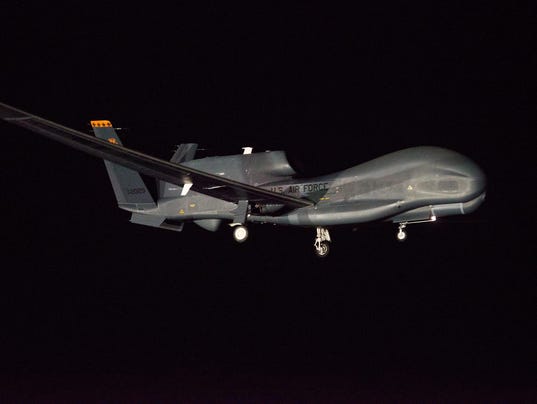After multiple attempts to end the Global Hawk Block 30, the US Air Force has now included the high-altitude, long-endurance unmanned system in two straight budget requests, giving a sense of stability to the program — and allowing operators to turn their eyes to future upgrades.
The service had wanted to retire the Global Hawk and funnel that money into keeping the manned U-2 flying. But intense pressure from congressional allies of manufacturer Northrop Grumman kept the Global Hawk alive. Now, it appears set to be the high-altitude option for the future.
In last year's budget, the Air Force sought to retire the U-2 immediately, but Congress again intervened. In this year's budget request, the service instead said it plans to retire the U-2 in 2019, providing a buffer zone during which the Global Hawk can be upgraded.
Northrop announced in February that it had driven flying-hour costs down to $14,876 in 2014. That number was $24,336 in 2013 and $33,598 in 2012. That cost drop occurred as the RQ-4 saw a 40 percent increase in flying hours between 2013 and 2014.
The upgrades needed are a weather radar, a universal payload adapter, which would allow Global Hawk to carry a wider range of electro-optical/infrared sensors, as well as legacy systems such as the U-2's wet film optical bar camera.
The Royal Australian Air Force announced last year it will procure the MQ-4C Triton to meet its maritime surveillance requirement. The Triton, a variation on the RQ-4 being developed for the US Navy, comes equipped with an active, electronically scanned array advanced radar and the ability to go below cloud cover.
Although details are still being finalized, the information released by Australia indicated it plans to purchase seven MQ-4Cs.
defensenews

No comments:
Post a Comment